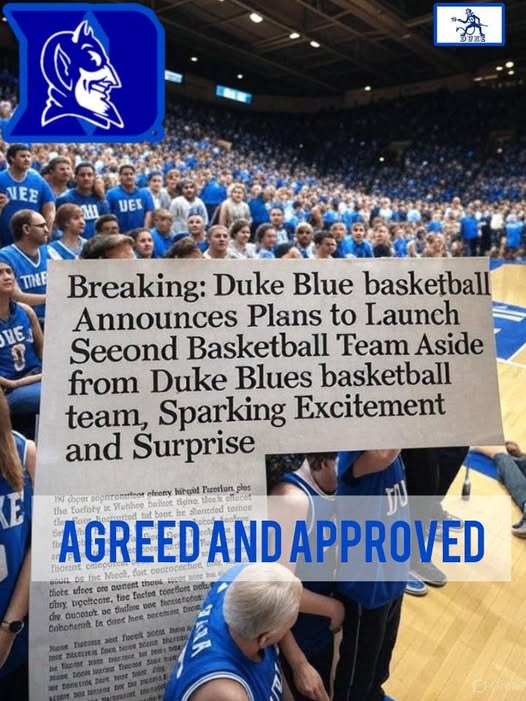In a stunning and unprecedented move, Duke Blue basketball has officially announced the creation of a second basketball team—separate from the flagship Duke Blues squad—aimed at expanding the program’s reach, developing talent, and revolutionizing the way elite college basketball is structured. The announcement, made early Thursday morning, sent shockwaves across the NCAA landscape and has already triggered massive excitement among fans, analysts, and recruits alike.
This bold initiative represents a strategic shift in how one of the most iconic programs in college hoops views development, competition, and global outreach. While Duke has long been a symbol of excellence with its historic men’s and women’s programs, the addition of a second competitive team is a move few—if any—elite programs have ever attempted. It could set a blueprint for how powerhouse schools manage their talent pipelines in the NIL and transfer portal era.
According to early reports, the new team will operate under the umbrella of Duke Athletics but will function with its own dedicated staff, schedule, and player rotation. While it won’t immediately compete in the NCAA Division I structure, it will face other high-level programs in exhibition, invitational, and global showcase formats, allowing younger players and developmental prospects to get valuable playing time and exposure without sacrificing eligibility or team chemistry.
“This is about innovation. It’s about growth. And it’s about giving more student-athletes the chance to represent Duke on the court,” one source close to the program said. “We’re creating a space where emerging players can develop against top-tier competition without the usual logjam at the top of the depth chart.”
The move is widely seen as a response to the evolving college basketball ecosystem—where top recruits demand immediate roles, transfer movement is at an all-time high, and international opportunities are luring away top-tier talent. By launching a second team, Duke sends a clear message: you don’t have to leave to get minutes; you just need to stay and grow.
Fans have already begun speculating about the branding, schedule, and potential roster of the new team, with some suggesting it could function similarly to a G League affiliate or Euro-style developmental club. Others are wondering whether Duke will invite other top programs to follow suit, creating a new tier of high-profile non-Division I competition that enhances exposure and keeps elite prospects engaged and loyal.
Either way, one thing is clear: Duke just changed the game—again.



